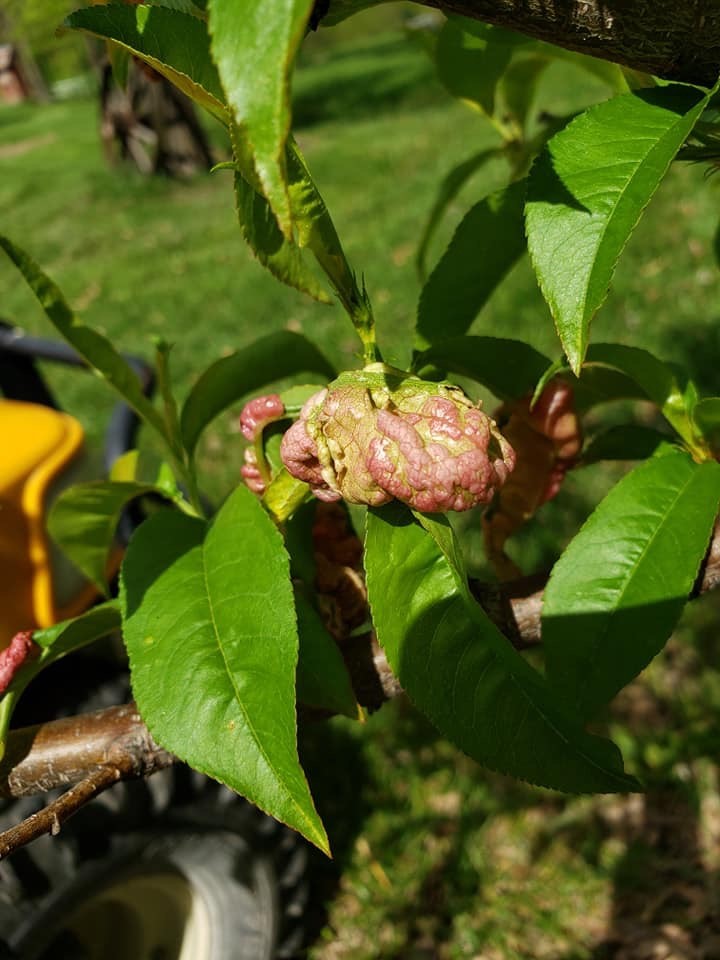Issue 5, June 18, 2019
Peach Leaf Curl
Peach leaf curl has been a common concern reported by many Extension offices this spring. Peach leaf curl is a fungal disease caused by Taphrina deformans and is one of the most commonly encountered diseases of peaches and nectarines, especially in home plantings. It primarily affects the foliage, but may also affect blossoms, young twigs, and fruit.
Peach leaf curl overwinters as dormant spores in bud scales and bark crevices. The pathogen infects leaves as the buds begin to swell in the spring. Infected leaves become thickened, leathery, and will also be distorted and puckered. The distorted areas are quite noticeable because they will become pink, red, or purple in color. Once the fungus begins to produce spores, the affected areas will turn grayish white and appear velvety. Infected leaves will eventually turn yellow and fall off of the tree. New leaves may be produced in June or July to replace the fallen leaves, especially in severely infected/defoliated trees.

Peach Leaf Curl, Photo Courtesy of Von Gittemeier
If fruit becomes infected, it will also be distorted, and the infected area will lack peach fuzz making them look like it has been polished. As the fruit grows larger it will often begin to crack. Infected fruit will usually prematurely drop as well.
Peach leaf curl does not normally kill trees, but it may weaken severely infected trees. This can lead to infection by other diseases, increased chances of winter injury, and a reduced crop the subsequent year. Fortunately, plants will only become infected one time during the growing season. Any new growth will not be infected.
There is nothing that can be done for trees infected by peach leaf curl this year outside of taking steps to maintain tree vigor (fertilizing, irrigating when needed and heavily thinning fruits to reduce demand on the tree). To prevent infections next year, apply a dormant spray of chlorothalonil, or a copper based product such as Bordeaux mixture to trees in late fall after leaves have dropped, or very early spring before the buds begin to swell. The fungicides will kill spores on bark and buds and good coverage is important. Once buds begin to swell it is too late to prevent infection. When making pesticide applications make sure to read and follow all label directions.
Ken Johnson (Edited by Travis Cleveland)